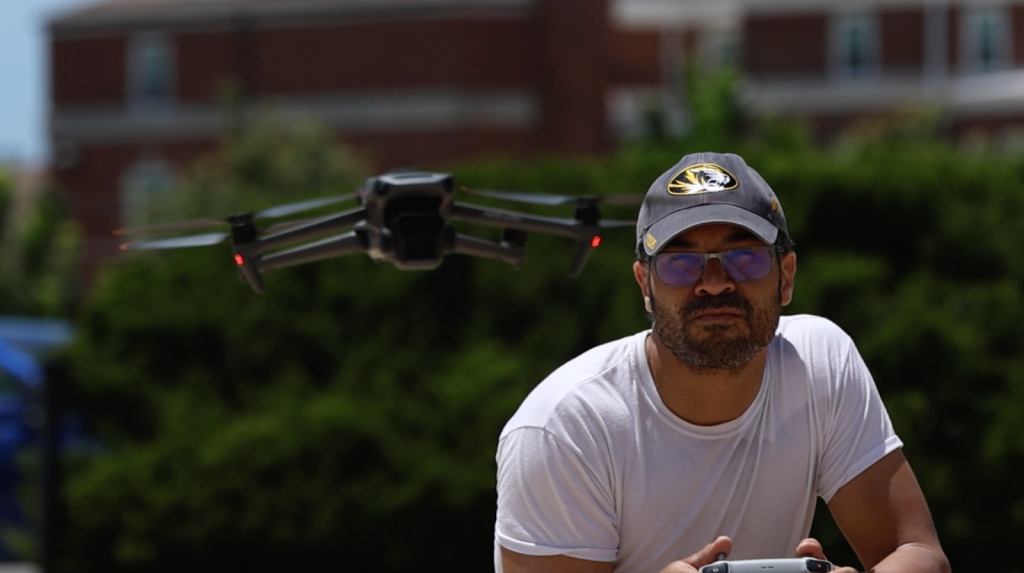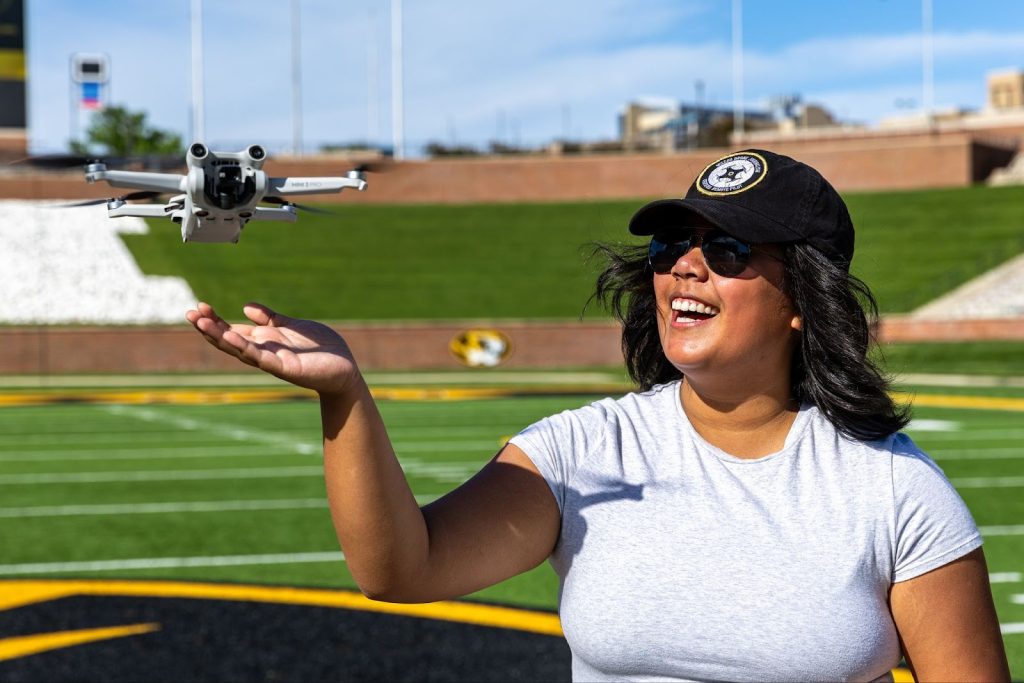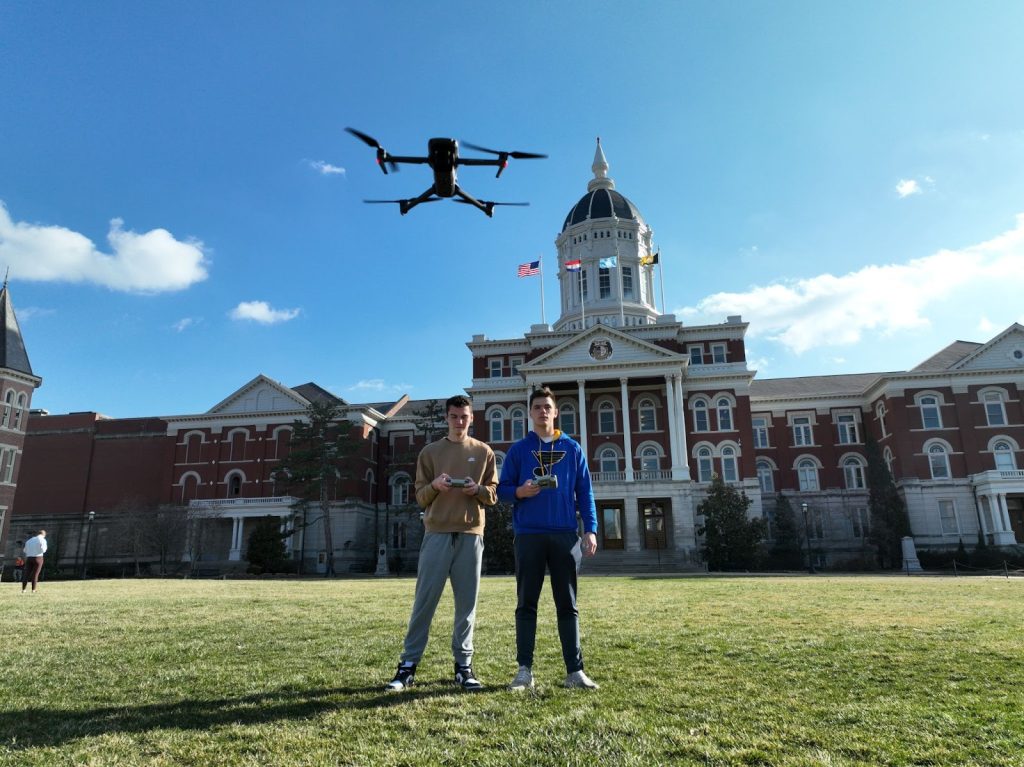
Assistant Practical Professor Dominick Lee is a Part 107 commercial drone pilot with over 500 flight hours. He teaches the Drone Journalism course at Mizzou and flys the DJI Mavic 3 Pro to capture aerial videography for KOMU 8 newscasts.
Drones’ impact on journalism continues to grow
Innovations can outpace regulations, says ‘The Drone Professor’
Lee, a professor at the Missouri School of Journalism, is a multimedia specialist and television producer who also leads the school’s drone journalism program.
Journalism has been an early adopter of drones and one of its great beneficiaries. The modern quadcopter’s use has grown to include public safety, law enforcement, agriculture, engineering, exploration, inspection, deliveries, and notably, as weapons of war. Drones are becoming so integral that often the demand for innovation is progressing faster than the regulations that govern our airways. For that reason and more, there is no better time than now for this generation of journalists to embark on a mission in the skies and discover how drones are continually changing the world.

To my readers, my name is Dominick Lee. To my students, I’m simply The Drone Professor. Come with me as I provide you with an aerial view from above the University of Missouri’s Drone Journalism Program. Drone professors have provided RJI Online readers with news and tips in the field since February 2018, back to the time when the godfathers of our program, Professor Judd Slivka and Professor Emeritus Stacey Woelfel, published regularly. There has been a hiatus, but I intend to publish new and insightful columns for drone journalists.
If your newsroom, non-profit organization or commercial enterprise isn’t considering ways to integrate drones into its workflow, it will be missing out on an industry expected to be worth $65 billion in the next five years in the U.S. Drones in journalism should naturally grow along with it. Learning the FAA’s Part 107 regulations and becoming a commercially certified pilot is going to be the gateway for any legitimate professional looking to embrace flying as a part of their occupation.

The best part is, the information needed to learn is out there for anyone eligible over the age of 16. Consider the free and digitally available resources online to gain the knowledge you need to become certified. Even the resources that cost are relatively inexpensive and are encouraged for learning more efficiently. Those interested should seek out multiple perspectives for piloting, not just for drones, but even small civil aircraft to become more confident ahead of taking the FAA’s exam. For perspective, our students spend eight weeks focused exclusively on Part 107 regulations, and that doesn’t seem to be enough time to learn everything regarding aviation. That takes years to master.
I hope these upcoming contributions bring as much useful guidance to as many newsrooms seeking to adopt drones as efficiently as possible. Feel free to reach out directly about the class, or for more information about the University of Missouri is using drones at the School of Journalism.
By the numbers
Since 2022, the drone journalism class at the Missouri School of Journalism:
- Class size: 40/semester
- Student T.R.U.S.T. Recreational Certification: 100%
- Part 107 certified students: 50+
- Average Part 107 score: 85%
- Drone fleet: DJI Mini 3 and 4 Pro / DJI Mavic 3 Classic
Cite this article
Lee, Dominick (2025, Nov. 18). Drones’ impact on journalism continues to grow. Reynolds Journalism Institute. Retrieved from: https://rjionline.org/news/drones-impact-on-journalism-continues-to-grow/
